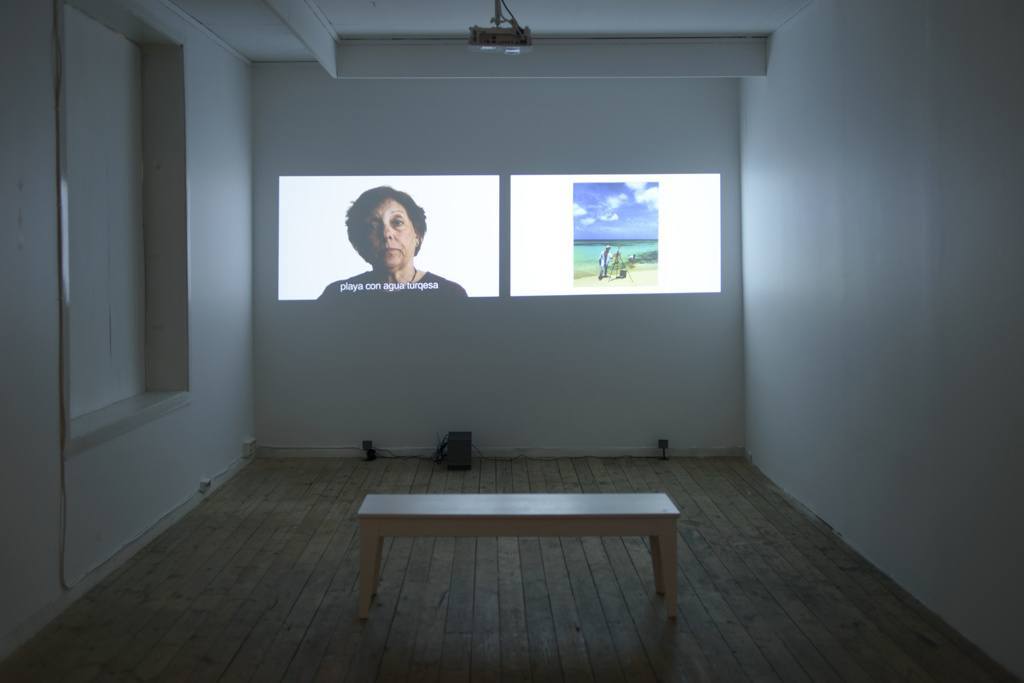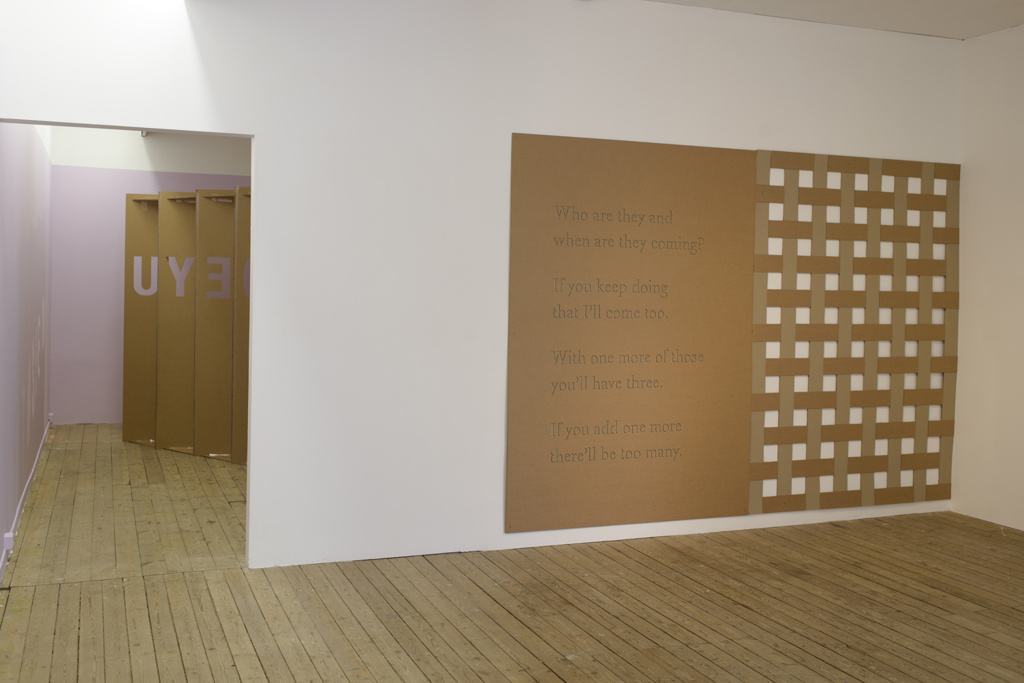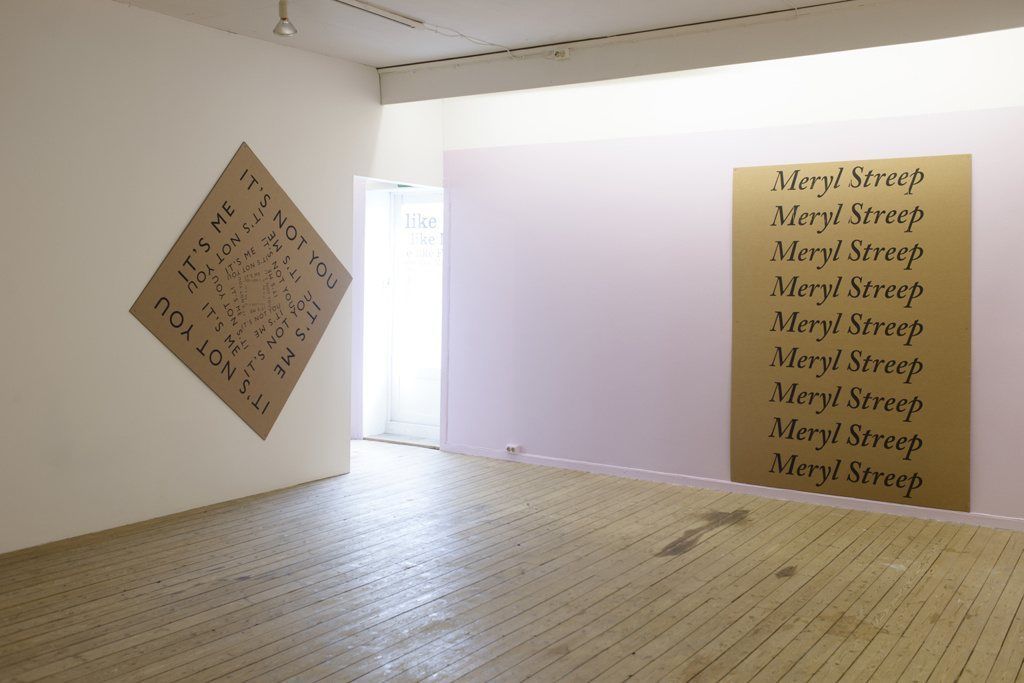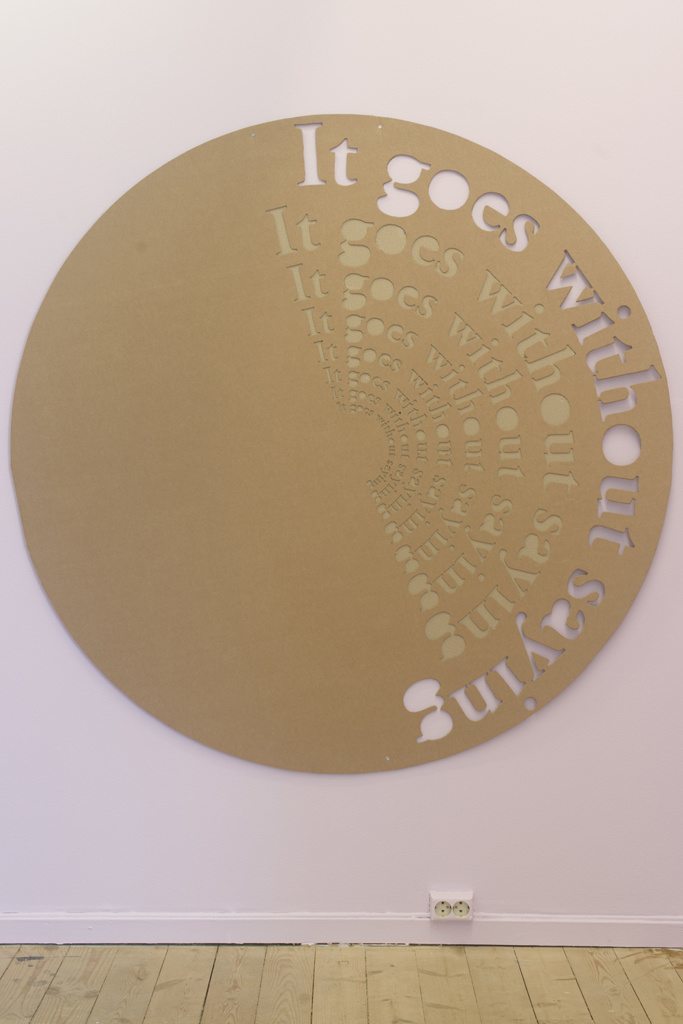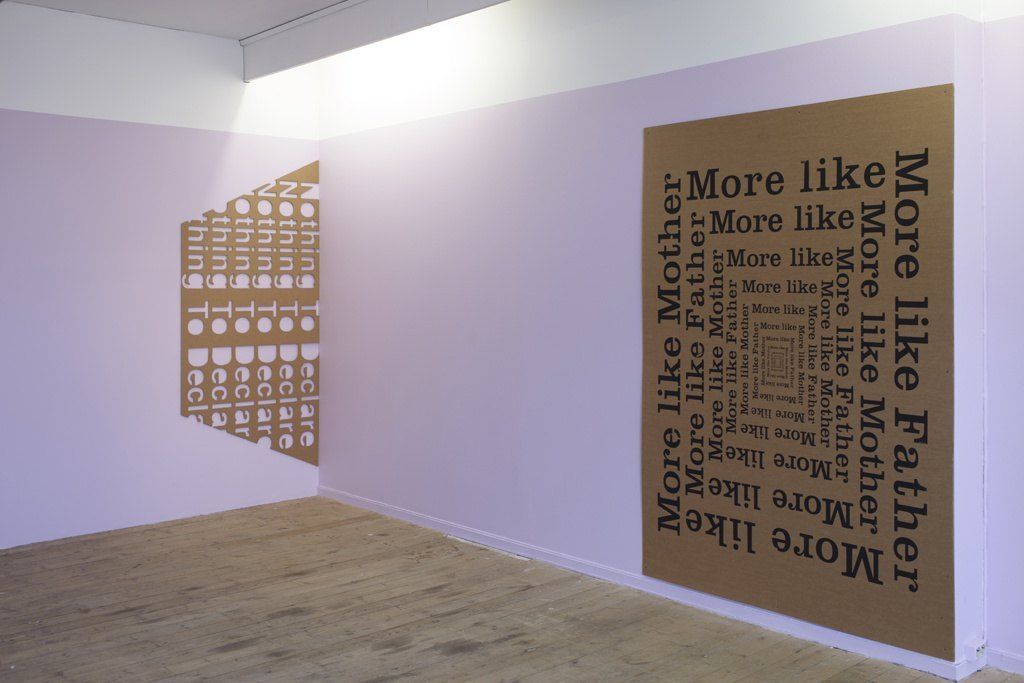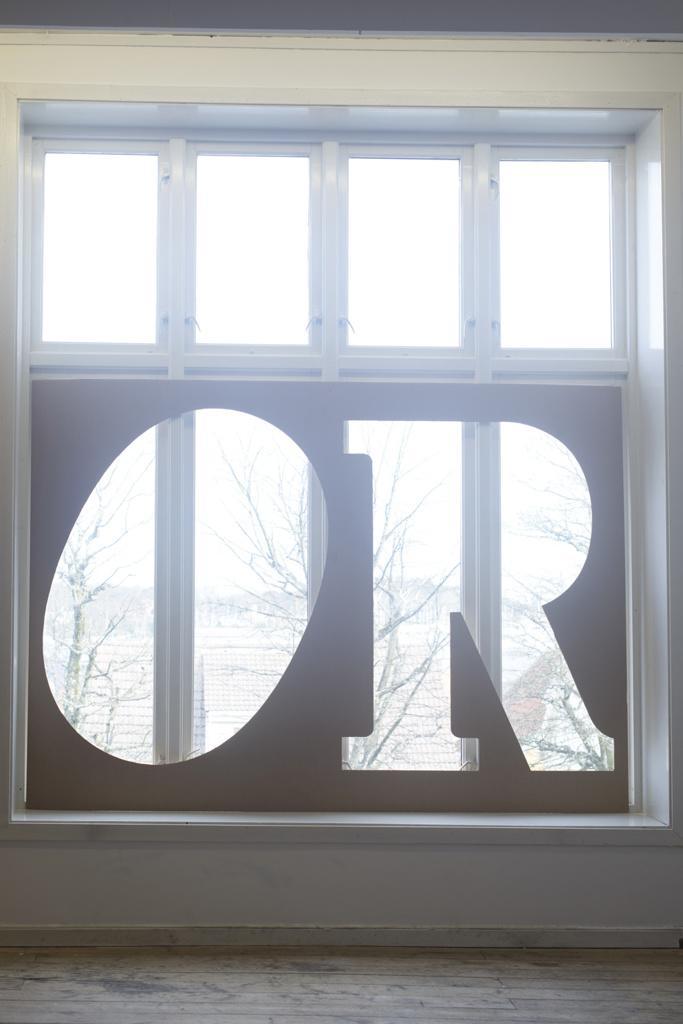Meryl Streep is a replica of a sculpture that I made in 2008. The original was made in sheetrock with 5-7 layers of primer + paint and then cut and peeled to the paper just before the plaster. I then went back in with gold leaf, to gild actress’s name. For Rogaland, I remade this work by silkscreening her name on a sheet of cardboard. I decided to remove color from the sculptures, beyond the colors of the double-wall cardboard + black and grey. The short version of the back story for this work, is that I had a solo show in 2008, my first in Los Angeles, that highlighted points of comparison between the final years of the Reagan Administration (mid-to-late 1980’s) and the lead up to the 2008 US presidential election, after George W. Bush’s two miserable terms. I mapped political as well as social/ cultural overlaps between these time periods, using a 1986 fundraiser called “Hands Across America” as a point of departure. I also focused on the public emergence of AIDS during Reagan’s presidency, and candidates, including Barack Obama, tendency to heroicize/mythologize Reagan’s presidency. In researching popular music, books, and movies of the 1980’s, I realized that Meryl Streep was in a movie every year, that decade. I created a portrait that highlighted her as an icon of that decade, as well as 2008.




